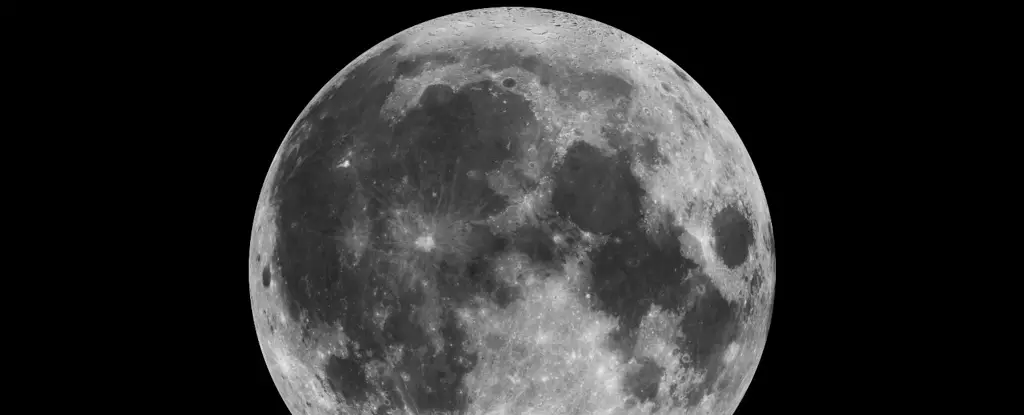Earth is set to welcome an intriguing phenomenon – a “mini-moon,” scientifically cataloged as 2024 PT₅. This small celestial entity, approximately 10 meters (about 33 feet) in diameter, is not merely a passing curiosity; it signifies our planet’s diverse interactions with asteroids. Unlike the Moon, which is a permanent fixture in our night sky, 2024 PT₅ will grace us with its presence temporarily. On September 29, it will become a temporary satellite, offering an extraordinary opportunity for astronomers and enthusiasts alike to observe a celestial event that is both rare and fleeting.
The fact that this object is an asteroid adds an element of excitement to the event. Discovered recently on August 7, it is notable that its journey brings it close to Earth just before it begins its two-month orbit—a period during which it will complete one full revolution around our planet. This ephemeral companionship is set to end on November 25, as the mini-moon will break free from Earth’s gravitational hold and continue its orbit around the Sun.
Interestingly, 2024 PT₅ is not a stranger to Earth. Astronomers have been able to trace its movements over the past six decades, articulating a narrative that underscores this asteroid’s frequent flybys of our planet. In this fascinating chronicle, it has made multiple close encounters, with notable passes recorded in February 2003, April 1982, and March 1960. While these visits were relatively distant (over 8.2 million kilometers away), they paint a picture of an object that has long been navigating the cosmic dance around our planet.
The latest close approach occurred just one day prior to its discovery, underscoring the effectiveness of modern astronomical monitoring systems such as the Asteroid Terrestrial-impact Last Alert System (ATLAS). This advanced tracking provided crucial data, enabling astronomers from institutions like the Complutense University of Madrid to characterize its trajectory precisely, enhancing our understanding of near-Earth objects.
Navigating the intricate dynamics of the solar system, 2024 PT₅ is identified as part of the Arjunas group, a collection of near-Earth objects that share similar orbits with our planet. This classification diminishes the likelihood that it is a piece of space debris, reflecting the increased precision and capability of current astronomical techniques in discerning the origins of such space rocks.
Moreover, the characteristics of its orbit suggest that 2024 PT₅ is on a horseshoe-shaped trajectory around Earth, highlighting the interaction between gravitational fields and the motion of celestial bodies. This understanding is pivotal when contemplating the fate of our temporary moon; while its proximity to us offers a splendid opportunity for research and observation, it is also a reminder of the vastness and complexity of space.
Despite this temporary companionship, Earth’s relationship with 2024 PT₅ is not over. Predictions indicate that the asteroid will return for a visit on November 8, 2055, albeit from a greater distance of approximately 5.2 million kilometers (3.3 million miles). Looking even further ahead, there are estimates that it could make another close approach in January 2084 at around 1.66 million kilometers (1 million miles).
This cyclical interaction illustrates the intricate dance between Earth and its nearby celestial companions, cementing our understanding of the ongoing evolution of objects within our solar system. Moreover, these encounters accentuate the importance of monitoring and researching near-Earth objects, as they present a unique opportunity to learn more about the origins of asteroids and their potential impact on our planet.
The occurrence of mini-moons is a fascinating aspect of our planetary interactions. In recent years, similar phenomena have been documented, illustrating that small celestial objects can momentarily intertwine within our gravitational web. Notably, in 2020, a small asteroid measuring just 3.5 meters (11.5 feet) was observed orbiting Earth for roughly three years before breaking free. Likewise, another mini-moon identified in 2016 was characterized as a quasi-satellite—an object that orbits the Sun while remaining tethered to Earth through its gravitational influence.
Such discoveries reinforce our understanding of the cosmic ballet occurring around us, revealing the significance of small asteroids and their roles in enhancing our planetary experience. As our technology continues to evolve, monitoring systems will undoubtedly uncover more of these fascinating celestial encounters, allowing humanity to deepen its understanding of the ever-changing universe we inhabit. The brief presence of mini-moons like 2024 PT₅ invites us to ponder our place in the cosmos while igniting curiosity about the celestial wanderers that share our solar system.


Leave a Reply